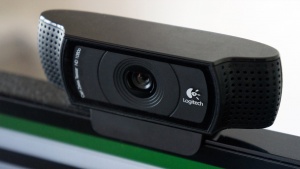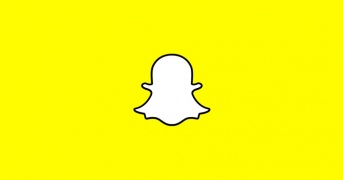Webcams
Recently, people have become more aware of the misuse of webcams as they can easily be employed with malicious intent, ranging from breaches of privacy to blackmailing. This decade marked a rise in the hijacking of webcams by black-hat hackers. This practice has become so common that a term has been coined for this specific type of hacking: camfecting.[2] The notion of camfecting has been covered in popular media, having been covered by an array of TV shows and movies. Some of the most influential people in popular culture, especially in the area of technology, brought this topic to light. The main ethical issues concerning webcams stem from this practice of camfecting as a means to breach the privacy of users, as well as the use of webcams for voyeurism/surveillance.
Contents
History
Webcams were developed in 1991 by Quentin Stafford-Fraser and Paul Jardetzky in order to monitor a coffee pot at the University of Cambridge in another room. The researchers only wanted to view whether the coffee pot was full or needed to be refilled, and had the webcam directly connected to a remote monitor. Given its initial creation predated the Web, Webcams were connected to the Internet for the first time in 1993, as an IoT (Internet of Things) technological application, which expanded their usage and applications. They accomplished this feat by enhancing the image processing and developing a remote procedure call mechanism, that allowed image frames to be uploaded to the Web. [3]
Connectix Corporation was the first company to commercialize the webcam, and transform it from its original limited usage to one that could be attached to personal computers. In 1994, Connetctix sold the first commercial webcam, the "Quickcam," for $99. The phenomenon of webcasting and lifecasting, which allowed consumers with webcam access to remotely broadcast their personal activities to third parties. In the 2000s, companies such as Apple, Microsoft, and Logitech began to produce webcams, and integrate them into the design of their PCs. When major instant messaging providers began providing video-calling services, webcams gained applications for real-time, face-to-face correspondence. [4] Webcams are now available in a variety of devices, such as cellphones, electronic workpads; and for a variety of applications, such as driving, security, and teleconferencing.
Common Uses
There is tremendous value in being able to see someone's face and natural reactions - in real time. Video chatting is beneficial for users who seek to connect with loved ones, making it easier for them to maintain relationships. This is common among families with relatives in the military. Webcams are also useful for professionals as they allow for more intimate business calls and enable people to work remotely. In the education sector, webcams serve as an effective tool as many lecturers offer the option of recording the lecture and posting it online for their students to either live stream or watch at a later date. Additionally, online training sessions and tutoring can be held via webcams [5].
Interview Systems
Most recently, webcams have been used to aid in the hiring process for organizations. Many large corporations have a prerecorded question and give interviewees thirty seconds to prepare and then record their answers. While this process may seem more efficient, it comes with its own issues. Since the web system analyzes body language facial expressions, the system flags people with uncontrollable twitches and other disabilities. This is being combatted by companies like HireVue. HireVue's application was designed using Value Sensitive Design in order to avoid biases that commonly occur with recruiting software. HireVue claims to be committed to retraining their AI to remove factors that lead to bias.
Popular Webcam Technologies
Just like other technologies, the popularity of webcam technology varies extremely between different user groups and changes constantly.
Some popular webcam technologies include:
- Skype, a digital and chatting technology created in 2003, was one of the first widely-used video chat platforms.
- Omegle is a chat website where users socialize by being anonymously paired together to video chat. Because of the nature of the platform and the fact that video chats were not monitored by the site, Omegle was full of profanity and nudity.
- Facetime is an Apple-specific video chat technology that enables users who both have Apple devices to chat with one another.
- Snapchat, created in 2011, is one of the most popular applications among smartphone users, especially in America. What started out as an app used to send disappearing photos, users can now send videos and even video chat live with one another.
- Houseparty was created in 2016 and quickly rose to a short burst of popularity among young Americans because it was one of the first video chat technologies that allowed multiple people to be in the same video chat.
Outstanding Instances
Robbins v. Lower Merion School District
In 2010, a student at Lower Merion High School in a suburb of Philadelphia, PA was punished in school for something he was caught doing at home (drug use and sales)[6]. The school was only aware of what he did at home because he was using his school-issued laptop at the time, and the school took a photo through the computer's webcam. This led to the discovery that the school had taken almost 60K images with the protection of its no longer existent electronic monitoring policy.[7] The school district was sued for violation of privacy by the student's family, and they have ceased any tracking activity of its students.
Glasgow
In 2013, the privacy of a student in Glasgow, Scotland was compromised via her webcam while watching a DVD in her bath. BBC Radio 5, highlighted this incident as they had a live investigation discovering many websites of hackers trading photos and footage captured via webcam or selling these photos and footage.[8] This incident raises ethical concerns about privacy breaches and the immoral and non-consensual use of photos to generate a profit.
Russia
Webcams are being manufactured into more and more products, resulting in diverse environments and/or opportunities for potential hackers. In 2014, a Russian website that had indexable categories of live stream footage from baby cameras to personal webcams were uncovered. Each stream was labeled by the country it was from, and the specific location from which it was being broadcasted. The website ran advertisements on the page for monetization.[9]
Houston
In 2018, a hacker gained access to a webcam baby monitor in Houston, where he then began to spout “sexual expletives” and threats along the lines of “I’m going to kidnap your baby”. Similar instances were reported in different locations from cities in South Carolina, Minnesota, and Arizona.[10]
Shodan
Shodan is a search engine that lets you search for computers and other connected devices, including webcams. One of Shodan's uses is to discover unsecured webcams that are broadcasting over the internet, at times without the owner's knowledge.
Preventative Measures
To prevent attacks, there are a number of precautions users may take to limit vulnerabilities from their devices. For external webcams, it is recommended that users only plug their device into a computer's USB port when it is actively in use. For internal webcams, simply securing a physical object in front of the lens to obscure the image when it is not in use is a reliable means of preventing attacks as well. It is common practice for computer owns to place tape or a sticky note over their device's lens. Furthermore, installing anti-malware software and setting strong, secure passwords on one's device can function as an effective precaution to take if the user has a built-in webcam. Unintentional, malicious downloads can be avoided. It is optional to have webcam covers as well and to ensure notifications when a webcam is being used - even without you using it. [11] One doesn't have to be well known - a celebrity or in a position of power for these incidents to occur. It is important that people are aware of the variety of available methods that can help limit their vulnerability to hacking via webcam.
References in Popular Culture
Black Mirror
The prevalence of camfecting has led to popular culture media referencing this phenomenon. A prominent example is the “Shut Up and Dance” episode of Black Mirror, Season 3. In this episode, the main protagonist becomes a victim to camfecting while he is masturbating to child pornography. The hacker uses footage captured in order to blackmail him into doing a variety of activities, such as robbing a bank and even engaging in a fight that leads to the death of a stranger.[12] This episode raises a moral dilemma by revealing that the protagonist was actually a pedophile (or simply a viewer of child pornography), making viewers question the ethicality of humiliating someone via grey-hat, borderline black-hat hacking. Essentially, viewers are lead to believe that the protagonist is being unfairly targeted throughout the episode; we are meant to perceive the protagonist as a victim until his immoral preferences are revealed. Nevertheless, his experiences demonstrates the extent to which malicious actors can employ webcam hacking.
Mr. Robot
Mr. Robot is a widely watched TV show that also addresses camfecting. In episode 3, season 1, titled “eps1.2_d3bug.mkv”, one of the main characters' boyfriend has his webcam hacked into. The hacker records him and tells him that he has photos of his mistress.[13] The hacker uses this as leverage, blackmailing the character into spreading malware into a company’s computer system.
Snowden
Snowden is a thriller film released in 2016 that depicts the events surrounding Edward Snowden, who exposed classified information on US surveillance program. One scene in the movie showed Snowden putting a tape over his laptop's webcam and putting a blanket over his head while typing his passwords, [14] suggesting that the US government or other foreign governments may have the capability to gain unauthorized access to webcams and other electronic devices for the purpose of surveillance.
Ethical Issues
Progress in the field of Information Ethics has raised the argument that a moral agent need not be human. Under the Actor Network Theory, agency, including moral agency is distributed throughout our networks of humans and non-humans.[15] Therefore, if webcam as a piece of electronics equipment gave an individual the capability to conduct an immoral act, the technology and its designers can be held morally accountable. Such theory pushes for greater moral consideration for the future developments of webcam technology.
Privacy
The foundation for privacy relies on the fact that people respect one another. However, when this common trust is breached, we see major ethical problems. It is common for third parties such as Internet service providers, advertising companies, and security agencies to monitor the activity of internet users. Cookies, for instance, are one of the many avenues third parties will use to learn more about their users. However, due to the prevalence of physical hardware such as webcams and microphones which can be found on most modern tablets and laptops, users are now exposed to a layer of physical vulnerability each time they unlock their tablet or open their laptop. In this way, the internet acts as a channel for hackers to exploit this vulnerability and gain access to a physical dimension of people's lives that was previously not made readily available. For a malicious internet user, a webcam or a microphone may serve as the ideal channel through which they can spy on unsuspecting victims. More often than not, hackers have malicious intent, and users may walk away from an attack completely unaware that it had even occurred.
Hacking into a webcam to take photos or to stream live without the consent of the owner has been shown to be a task that is relatively accessible - even for those with average technological capibilities. With the help of plug-ins, such as Meterpreter (a dynamically extensible payload that uses in-memory DLL injection stagers) and access to Wi-Fi, a hacker is easily able to take over a webcam without much programming knowledge.[16] Although most computers now have protective mechanisms that hinder this kind of intrusion, it is still very possible to remotely hack into a webcam. Even Apple laptops, which are notorious for being difficult to hack into, have been shown to be vulnerable to a webcam attack by researchers at John’s Hopkin’s, who demonstrated that it is possible to covertly capture images through iSight cameras on MacBooks and iMacs released prior to 2008.[2] Currently, it seems as if the only measure that is 100% foolproof (with respect to capturing visuals) is covering the camera itself.[17] It is also widely believed that the National Securities Agency has the ability to turn on webcams as well as built-in microphones without triggering the indicator light.[18]
Voyeurism
Voyeurism is the act of watching others participate in sexual behavior. This becomes a very relevant and large ethical concern when people use webcams to watch others without their consent. Voyeurism that goes "under" the radar is what Tony Doyle refers to as 'Perfect Voyeurism'. More specifically, perfect voyeurism is watching others engage in sexual behavior without being caught. Doyle mentions that the unethical part of voyeurism occurs only when the voyeur is exposed. Otherwise, if nobody knows this happens, it is 'perfect'. [19]
Age-restrictions
Although traditionally thought to be an issue concerning adults, webcam usage can also apply to children. Especially with the increased number of e-learning platforms through online schools or school-issued computers with webcams, these can be used to listen to, track, or data-mine underage children. Whether or not this is permissible, to collect information on children (whose ability to consent is questionable), could put them at risk if the images were taken and leaked to predators.[20]
Interviews
Several companies have been utilizing video interviews through platforms such as Skype to screen potential candidates.[21][22] Two-way interviews are conducted in real time with both the interviewer and the interviewee present, while one-way interviews consist of the interviewee recording himself responding to a set of pre-determined questions. [23] Companies such as Amazon have also used webcams to ensure candidates applying for technical roles do not cheat on their online coding assessments. This has prompted a backlash because of the level of discomfort or anxiety candidates feel, especially in the case of machine learning algorithms attempting to detect cheating by following candidates' behavioral patterns like eye and body movement. [citation needed]
This discomfort and/or anxiety may ultimately lead to poorer performance - which is not the desired result for either party involved.
See Also
References
- ↑ “What Is a Webcam?” Computer Hope, 3 Aug. 2018. www.computerhope.com/jargon/w/webcam.htm.
- ↑ 2.0 2.1 “Camfecting.” Wikipedia, Wikimedia Foundation, 13 Jan. 2019, en.wikipedia.org/wiki/Camfecting.
- ↑ Devaney, Eric. "The History of the Webcam," Techwalla, https://www.techwalla.com/articles/the-history-of-the-webcam
- ↑ Devaney, Eric. "The History of the Webcam," Techwalla, https://www.techwalla.com/articles/the-history-of-the-webcam
- ↑ “What Are the Benefits of Having a Webcam ” Chron
- ↑ “Robbins v. Lower Merion School District.” Wikipedia, Wikimedia Foundation, 6 Mar. 2019, en.wikipedia.org/wiki/Robbins_v._Lower_Merion_School_District.
- ↑ Nunnally, Derrick. “Second Suit over Lower Merion Webcam Snooping.” The Inquirer , 28 July 2010. https://www.philly.com/philly/education/20100728_Second_suit_over_Lower_Merion_webcam_snooping.html
- ↑ 'Horrified' Girl Spied on in the Bath by Webcam Hackers.” BBC News, BBC, 20 June 2013, www.bbc.com/news/av/technology-22986017/horrified-girl-spied-on-in-the-bath-by-webcam-hackers.
- ↑ “Is Your Webcam Allowing Hackers to Peer into Your Home?” The Telegraph, Telegraph Media Group, 20 Nov. 2014, www.telegraph.co.uk/technology/news/11242650/Is-your-webcam-allowing-hackers-to-peer-into-your-home.html. Wang, Amy B.
- ↑ “'I'm in Your Baby's Room': A Hacker Took over a Baby Monitor and Broadcast Threats, Parents Say.” The Washington Post, WP Company, 20 Dec. 2018, www.washingtonpost.com/technology/2018/12/20/nest-cam-baby-monitor-hacked-kidnap-threat-came-device-parents-say/.
- ↑ Saltzman, Marc. “Has Someone Hacked Your Webcam? Here’s How to Stop Cyber-Snoopers.” USA Today, 1 Mar. 2018. https://www.usatoday.com/story/tech/columnist/saltzman/2018/03/01/has-someone-hacked-your-webcam-heres-how-stop-cyber-snoopers/377676002/
- ↑ "Shut Up and Dance." Black Mirror, season 3, episode 3, October 21, 2016. Netflix.
- ↑ "eps1.2_d3bug.mkv." Mr. Robot, season 1, episode 2, July 8, 2015. Amazon Prime Video.
- ↑ Brandon, John. “Why the Movie 'Snowden' Will Make You Put a Piece of Tape On Your Webcam.” Inc., 20 Sept. 2016. https://www.inc.com/john-brandon/why-the-movie-snowden-will-make-you-put-a-piece-of-tape-on-your-webcam.html
- ↑ Adam, Alison. “Ethics for things.” Ethics and Information Technology, 2008. https://link.springer.com/article/10.1007/s10676-008-9169-3
- ↑ “About the Metasploit Meterpreter.” Offensive Security, www.offensive-security.com/metasploit-unleashed/about-meterpreter/.
- ↑ “How Hackers Can Watch You Via Webcam | ODS Cybersecurity Services.” ODS - Cybersecurity, 5 May 2017, opendatasecurity.io/hackers-can-watch-you-via-your-webcam/. Saltzman, Marc. www.usatoday.com/story/tech/columnist/saltzman/2018/03/01/has-someone-hacked-your-webcam-heres-how-stop-cyber-snoopers/377676002/. Sparkes, Matthew.
- ↑ Zetter, Kim. “How to Keep the NSA From Spying Through Your Webcam.” Wired, Conde Nast, 3 June 2017 www.wired.com/2014/03/webcams-mics/
- ↑ “Perfect Voyeurism” Tony Doyle
- ↑ Kanuka, Heather, and Terry Anderson. "Ethical issues in qualitative e-learning research." International Journal of Qualitative Methods 6.2 (2007): 20-39.
- ↑ Sullivan, Jessica R. "Skype: an appropriate method of data collection for qualitative interviews?." The Hilltop Review 6.1 (2012): 10.
- ↑ Oates, Jennifer. "Use of Skype in interviews: The impact of the medium in a study of mental health nurses." Nurse researcher 22.4 (2015).
- ↑ Milne-Tyte, Ashley. “Seeking Work? Ready Your Webcam.” The Wall Street Journal, Dow Jones & Company, 26 Sept. 2011, www.wsj.com/articles/SB10001424053111904537404576554943587087926.







